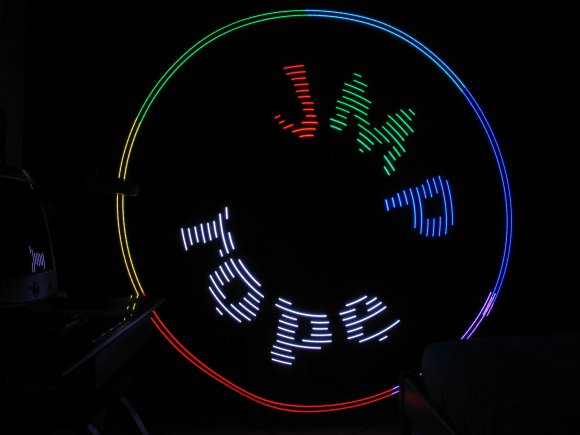
[Antonio Ospite] recently took up jump rope to increase his cardio, and also being a hacker decided to have some extra fun with it. He’s created the JMP-Rope — the Programmable Jump Rope.
He’s using the same principle as a normal POV (Persistence of Vision) display, but with a cool twist. He’s managed to put the microcontroller (a Trinket) and battery into the handle of the jump rope. Using a slip ring system, the RGB signal gets passed to the rope, which contains the LEDs. It’s a pretty slick setup, and he’s written another post all about how he did the hardware.
To create the images for his JMP-Rope, he’s outlined the steps to a successful POV image on his blog. These include re-sizing the image to a circle (duh), reducing the color palette, and then performing pixel mapping using a discrete conversion (from polar to Cartesian coordinates). After that it’s just a matter of representing your new-found pixel map in a 1D animation, played column by column. [Antonio] stores these frames on the micro-controller as an RLE (run length encoded) indexed bitmap.
Stick around to see how he made it, and some other cool examples of what it can do!
















